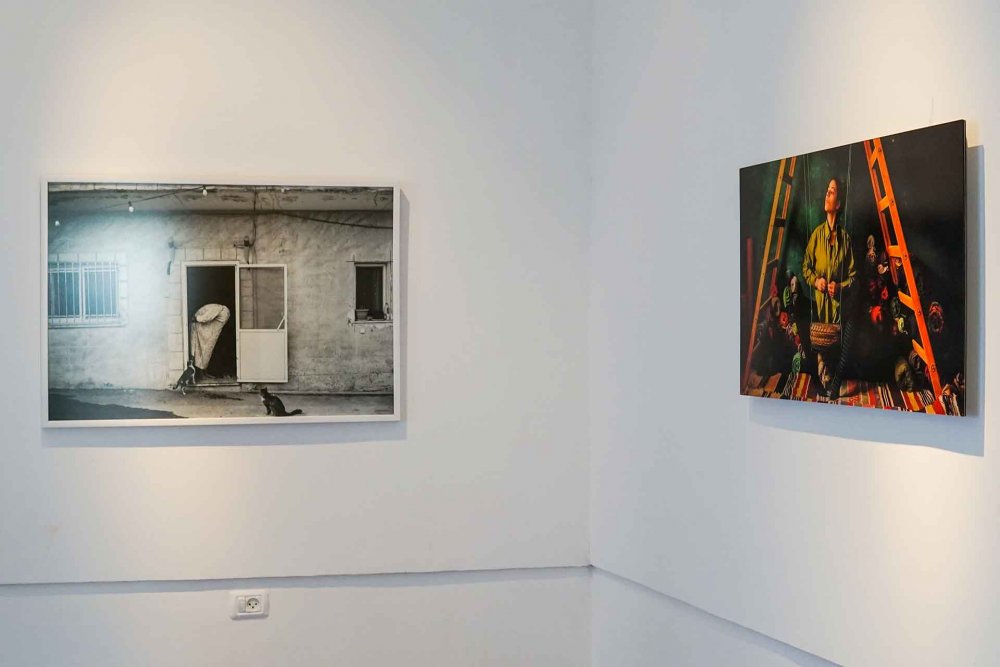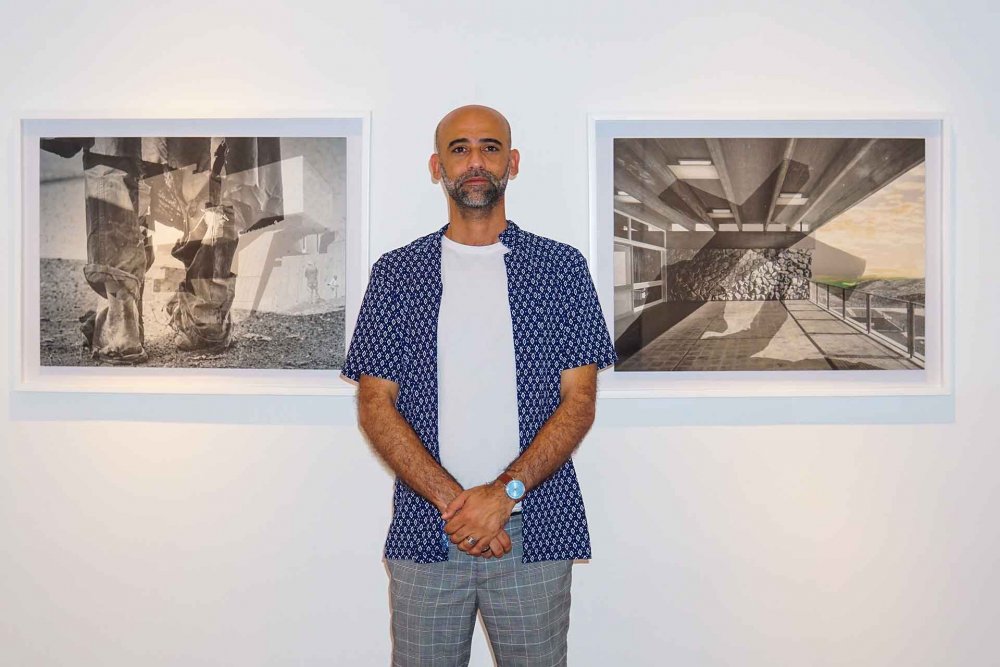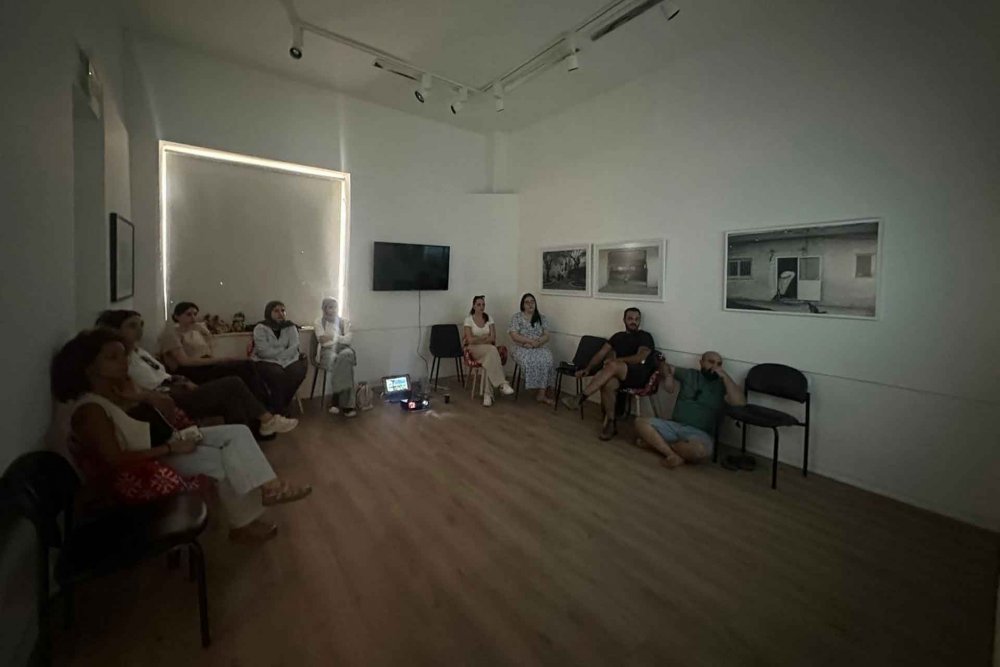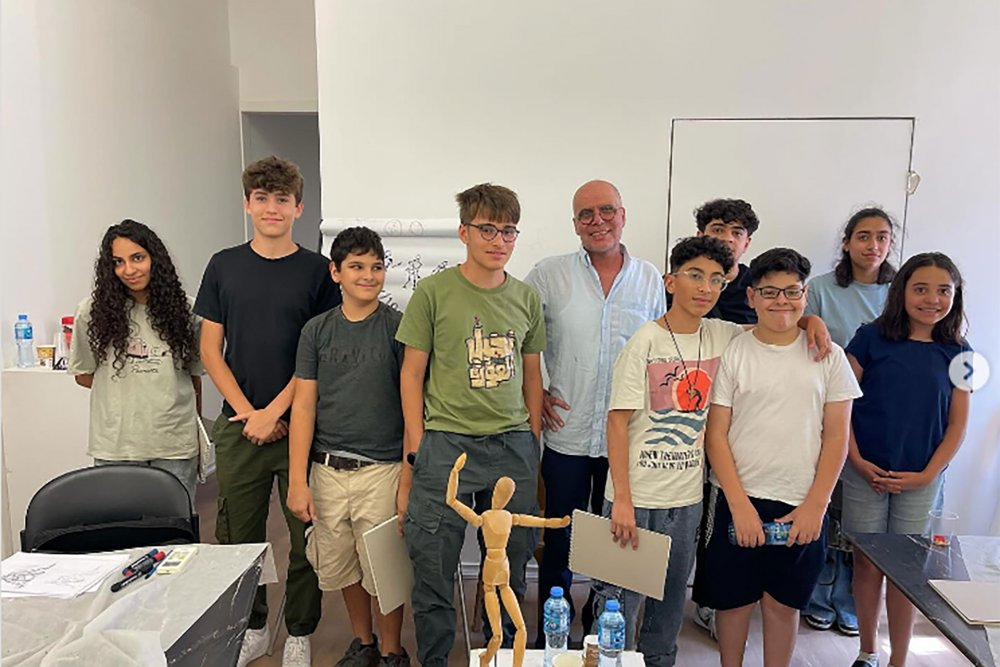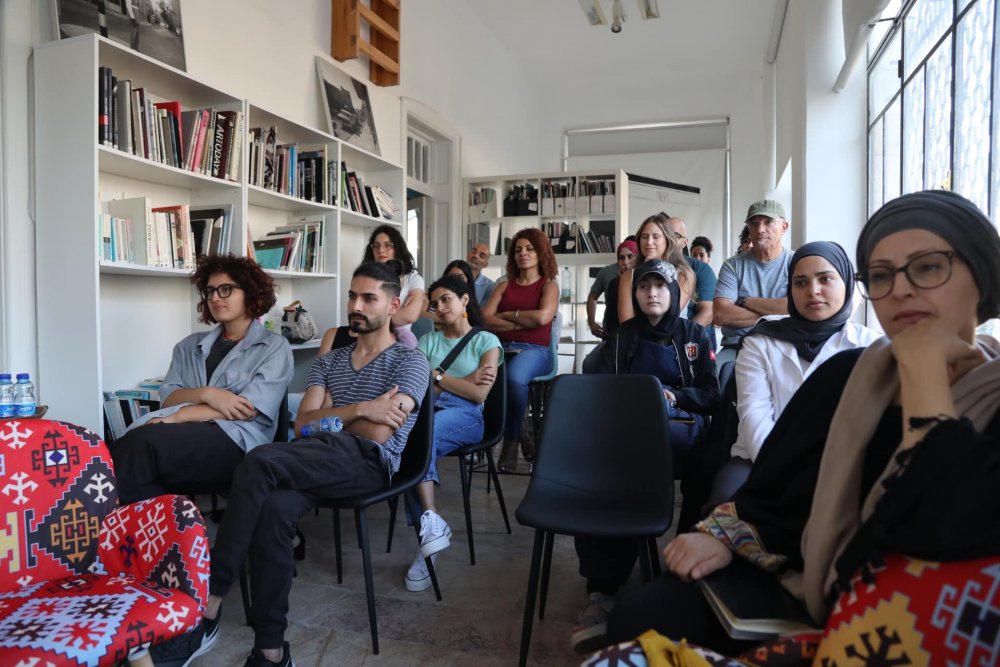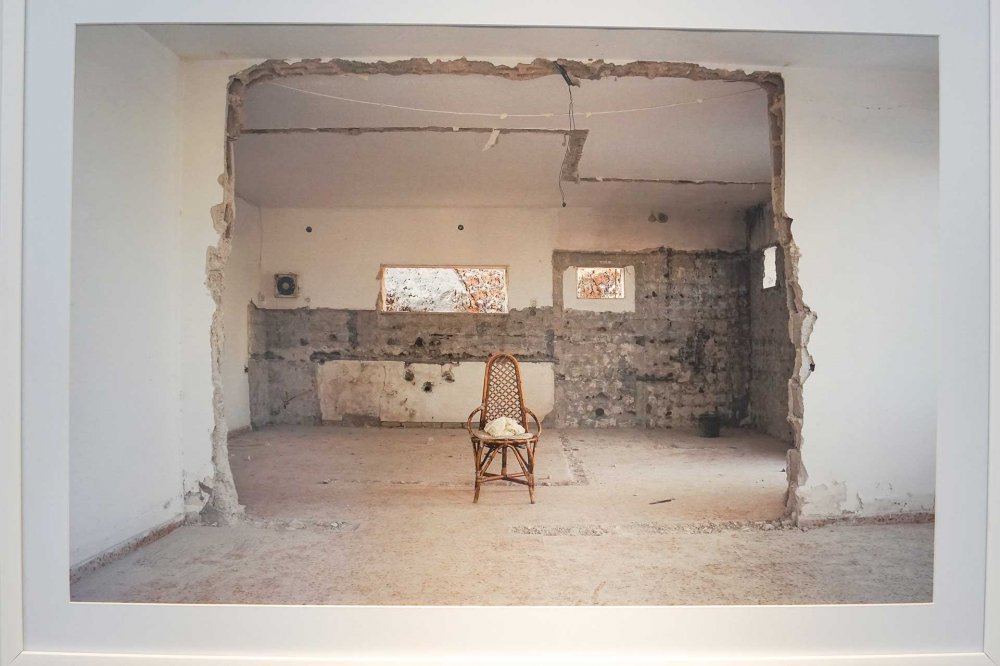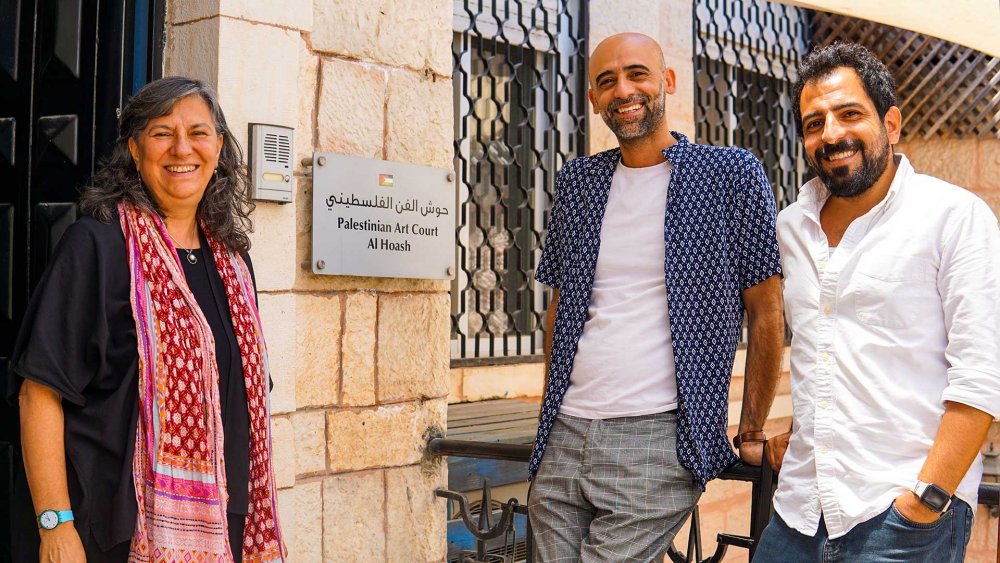Overview
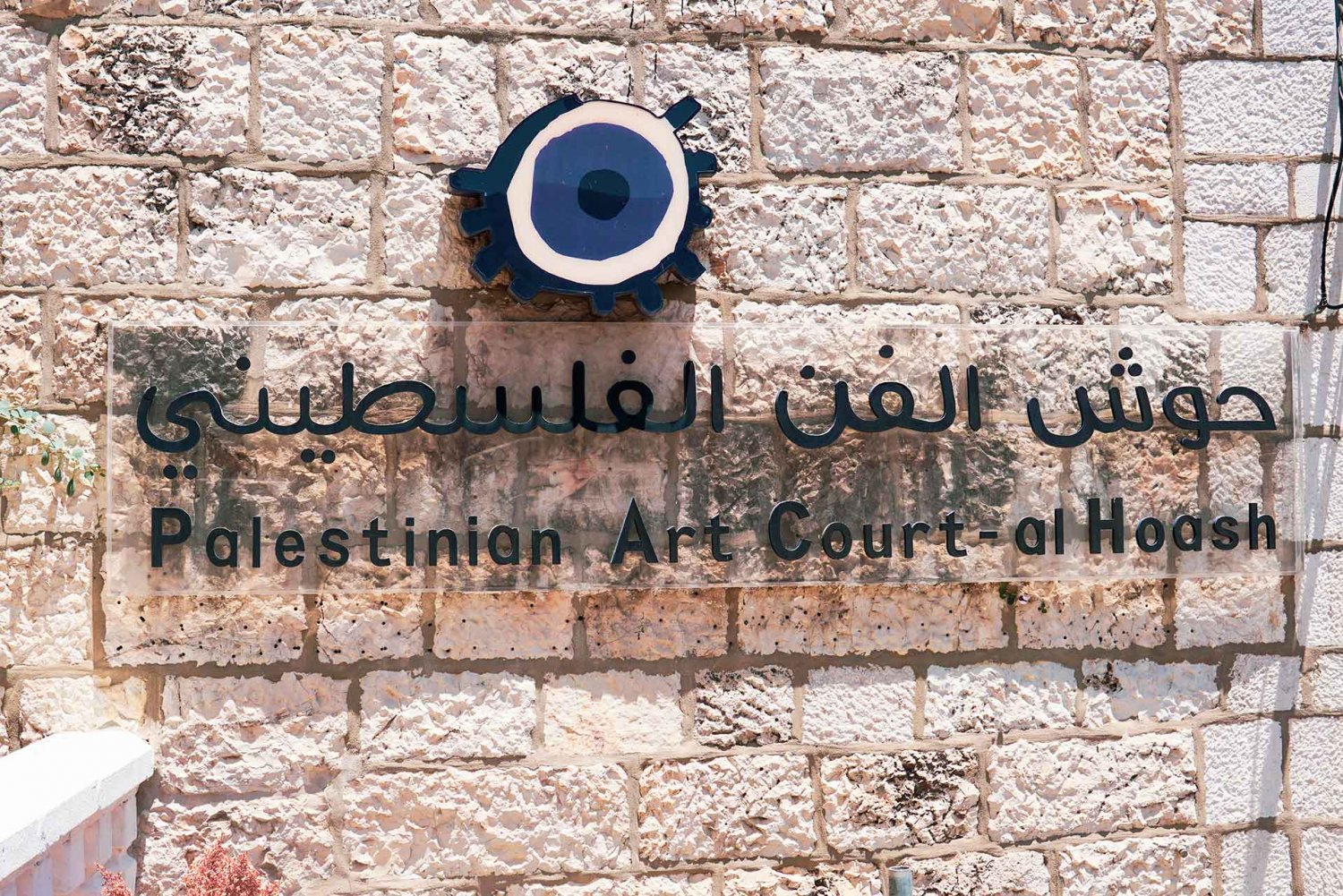
Credit:
Alice Austin for Jerusalem Story
The Palestinian Art Court—al-Hoash: Connecting Palestinian Artists with the World
Since opening its doors in East Jerusalem in 2004, the Palestinian Art Court—al-Hoash (commonly referred to as al-Hoash) has become one of the most respected visual arts galleries and nonprofit cultural organizations in the world, connecting Palestine’s most talented artists with global institutions.
It’s a hot day in Jerusalem on June 24, 2024, and al-Zahra Street is bustling with people as they shop, chat, and sit at local eateries. Al-Hoash is in the center of it all, tucked up on white sandstone steps. Inside, it’s cool as a cucumber with the thick walls absorbing the heat and protecting the artwork from the unapologetic summer sun.
Reem Abdel-Hadi greets me at the door. Born and raised in the West Bank city of Nablus, Reem is the general director and joined the organization in 2020 after working as an executive leader in organizational strategy, development, financial management, fundraising, and cultural and human rights advocacy. Before joining al-Hoash, she also worked as a consultant for the World Health Organization (WHO) and was cofounder, executive director, and chair of Al-Mada Association for Arts-Based Community Development. Prior to that, she worked as an institutional development manager for the Palestinian Museum in Birzeit, and a program analyst at the United Nations Development Programme (UNDP).
It’s fair to say that Reem has a wealth of experience in this field; however, she shares that working at al-Hoash has been one of the most fulfilling roles of her career. The team, art, and community are immensely special. The visual art organization is run by a core team of five people and a rotating number of volunteers. “If they aren’t volunteering, they’re taking maybe half or a quarter of their salary; it runs on community and passion,” Reem says.1
Al-Hoash, which means courtyard (in a traditional Palestinian house) in Arabic, is a Palestinian visual art organization that has worked since 2004 to provide a space for Palestinian artists, scholars, and specialists to collect, present, and interpret visual arts and social history.
While its gallery is the beating heart of the organization, al-Hoash also focuses on community-building programs such as its recently launched Palestinian Visual Archive Resource Hub, a multifaceted long-term program that seeks to provide and facilitate knowledge and resources on Palestinian art. There’s also the Alternative Community-Based Education program, which includes research-based and locally rooted seminars, workshops, and meetings, and there’s its Outreach and Community Engagement program, which aims to keep the local community updated with al-Hoash’s exhibitions and encourage the community to get involved themselves.
Al-Hoash Exhibitions, Workshops, and Events
The organization has exhibited works by renowned artists including the late Hassan Hourani, Vera Tamari, and Suleiman Mansour, and collaborated with galleries around the world.
Initially, the gallery aimed to simply present Palestinian art, but that purpose soon changed and morphed into something far more profound: It now acts as a safeguard of Palestinian culture. Since its establishment, al-Hoash has been gifted major archive assets, including the Al Wasiti archive and the Yvette and Mazen Qupty collection. It develops research resources and libraries, provides gallery space for over 100 exhibitions, and helps build and strengthen its community through workshops, art auctions, and publications on Palestinian art.
Every year, al-Hoash hosts exhibitions from artists across Palestine. In June, the gallery showcased photography by Ameirah Zayyan, Aniseh Ashqar, Marwa Bakri, Nidaa Badwan, Nour Abed, and Ahed Izhiman, a visual artist from Jerusalem who visited the gallery in July 2024. Ahed’s work is exhibited in the first of al-Hoash’s two gallery rooms, with two images side by side in a series titled The Mobs. The first is a photograph taken from inside a Brutalist-style Israeli building overlooking Mount Precipice in Nazareth.
“This is work about the colonization of Israeli architecture,” Ahed explains.2 “After 1948, they brought Jewish architects from around the world to choose random places and build completely different architecture, and this is one of them, it’s right on the mountain, and the architecture does not belong to the land.”
Ahed used multiple exposure and digitized coloring to emphasize the mismatch of environments and included the shadow of a cross of Jesus to represent the place from which he leaped, according to the Bible.
The second image by Ahed explores similar themes. It shows an image taken before 1948 of the feet of a Bedouin man backdropped by Brutalist architecture that does not belong to the land. It is a real building—a research center in the Negev desert. “They call it a research center, but research for what, we don’t know,” Ahed says. “They probably don’t know either.”
In the next room, there’s a video installation by Steve Sabella that shows images of Palestinian resistance in a range of artistic mediums, from montage to animation and photography. A striking image of a woman’s shawl on a lone chair in the center of a destroyed home is displayed next to it. The photograph was taken by Marwa Bakri, a visual artist and photographer based in Jerusalem, in the rubble of her old family home. Next to that is a self-portrait of Nidaa Badwan, an artist from Gaza, based in Italy, surrounded by blankets and embroidery. “She spent 100 days in her bedroom and created work based on the social pressures women live under in Gaza,” Ahed explains.
Ahed shares that there is a painting in the back office that isn’t on display that he wants me to see. “It’s called The New Arrival, it’s a reaction work; I did it in November. In it, you can see images from the Oslo Accords, and the shirt represents the NGOs that make money out of this new product coming out of Palestine–the war [on Gaza],” he says.
When Ahed was a young artist, exhibiting his work at al-Hoash was his ultimate ambition. “Al-Hoash was one of the places that I dreamt of,” he says. Now, Ahed is deputy of the board, and he is one of the most regularly exhibited artists in the center’s portfolio.
As well as showcasing the work of established talent, al-Hoash strives to provide new artists with platforms and opportunities. Ahed says that “al-Hoash has played a big role in helping artists, including those from Gaza, and helping them get involved in art and culture worldwide.”
This space acts as much more than a gallery. It offers workshops, events, and seminars, and maintains a digital archive of Palestinian art that dates to 2004. “Over the last 14 years, we’ve held over 100 exhibitions, not just here but in the [rest of the] West Bank, in Dubai, Germany, across the Middle East,” Ahed adds.
In early September, al-Hoash opened its exhibition titled “A City as Archive” (working title) curated by Dr. Rwan Sharaf, PhD. The exhibition includes 16 Palestinian artworks, marking the culmination of a long-term curatorial and research journey undertaken by al-Hoash. The project aims to uncover, collate, and redefine the narratives surrounding Palestinian cities.
Al-Hoash regularly collaborates with institutions around the world, including the Biennial Foundation’s Qalandiya International project, the culmination of the vision and work of seven prominent Palestinian cultural institutions focused on contemporary art within the Palestinian cultural landscape. Institutions include al-Ma‘mal Foundation for Contemporary Art, A. M. Qattan Foundation, International Art Academy–Palestine, Sakakini Cultural Center, and the House of Culture Arts–Nazareth.3
“This is more than people working with art and culture, it’s a big invitation that brings together international and Palestinian artists,” Ahed says.
Fundraising for Palestinian Artists
Spaces for Palestinian art and culture in East Jerusalem are few and far between, and the ones that are still running face a plethora of challenges, including high taxes, cuts, surveillance, and censorship. On top of that, cultural institutions aren’t a high priority when it comes to donor funding, especially backdropped by the ongoing Gaza war and humanitarian crises across the rest of the occupied West Bank. Al-Hoash, however, has a hard-working team applying for grants and funds, working tirelessly to ensure Palestine’s most promising artists obtain the opportunities they deserve.
Operating in Jerusalem is different from operating in other locations in the country. “We’re striving to present the power of Art in Advocacy, social justice, healing and social justice, freedom of expression, and emphasizing the Palestinian narrative,” Reem says. “It’s not a profitable organization, and donations to art and culture are very limited, and there’s a lot of competition globally, so we sometimes compete with Spanish or British artists.”
Tarek al-Bakri, chairman of the board, manages communications and helps fundraise for the organization. Born in Jerusalem, he is a researcher and visual documenter of the history of Palestine. Tarek reveals that working with al-Hoash is more of a lifestyle than a job, because he’s constantly fundraising and networking on behalf of the gallery—not because he has to, but because he wants to. “I feel it is a duty to my community and my city,” he expresses.4
He is an artist in his own right, spearheading a recent project where he photographed the abandoned local homes of Palestinians in exile. “They approach me, and I go to their villages, their houses, and we document the spaces and make videos and collages,” he says.
Tarek believes that al-Hoash contributes to the cultural identity of Jerusalem. “We’re a Palestinian institution here in Jerusalem,” he adds. “It’s not easy at all to operate, but it’s a space for everyone to work, to express, to produce art in Jerusalem under the Palestinian umbrella.”
“Anyone who is of Palestinian origin is under threat in Jerusalem. We don’t work with the Israeli municipality, and sometimes it’s hard to get funding, so it’s very tough to protect and preserve the culture and the artists,” Ahed adds.
Before the Second Intifada erupted on September 28, 2000, arts, crafts, and theater were booming in East Jerusalem. Reem explains that “now there are so many restrictions, and they are getting worse every day.” Despite the many challenges they face daily, Reem, Ahed, and Tarek believe it is all worth it for the sense of community and purpose they share.
“I see this as a hub for visual art. In an ideal future, al-Hoash will become a cultural hub for all artists where young people can express themselves, share their narratives, and take pride in their identity,” Reem says.
Notes
Reem Abdel-Hadi, interview by the author, June 24, 2024. All subsequent quotes from Abdel-Hadi are from this interview.
Ahed Izhiman, interview by the author, June 24, 2024. All subsequent quotes from Izhiman are from this interview.
See, for example, Nicola Gray, “Qalandiya International I and II: Cultural Resistance in a Palestinian Biennale,” Third Text 29, no. 3 (2015): 165–83; and Kirsten Scheid, “Adding Art to Qalandiya: Qalandiya International Biennale 2, 2014,” Anthropology Now 7, no. 2 (2015): 139–49.
Tarek al-Bakri, interview by the author, June 24, 2024. All subsequent quotes from al-Bakri are from this interview.

